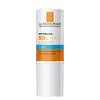What's inside
What's inside
 Key Ingredients
Key Ingredients

 Benefits
Benefits

 Concerns
Concerns

 Ingredients Side-by-side
Ingredients Side-by-side

Dicaprylyl Carbonate
EmollientTitanium Dioxide
Cosmetic ColorantWater
Skin ConditioningZinc Oxide
Cosmetic ColorantNeopentyl Glycol Diheptanoate
EmollientPEG-30 Dipolyhydroxystearate
EmulsifyingSodium Chloride
MaskingButylene Glycol
HumectantNylon-12
Polyglyceryl-3 Diisostearate
EmulsifyingAlumina
AbrasiveStearic Acid
CleansingDimethicone
EmollientGlycerin
HumectantOctyldodecanol
EmollientMagnesium Sulfate
Triethoxycaprylylsilane
Cera Alba
EmollientGlucose
HumectantXanthan Gum
EmulsifyingDisteardimonium Hectorite
StabilisingHydrogenated Polydecene
EmollientTocopheryl Acetate
AntioxidantTrehalose
HumectantPropylene Carbonate
SolventAscorbyl Tetraisopalmitate
AntioxidantCitric Acid
BufferingDicaprylyl Carbonate, Titanium Dioxide, Water, Zinc Oxide, Neopentyl Glycol Diheptanoate, PEG-30 Dipolyhydroxystearate, Sodium Chloride, Butylene Glycol, Nylon-12, Polyglyceryl-3 Diisostearate, Alumina, Stearic Acid, Dimethicone, Glycerin, Octyldodecanol, Magnesium Sulfate, Triethoxycaprylylsilane, Cera Alba, Glucose, Xanthan Gum, Disteardimonium Hectorite, Hydrogenated Polydecene, Tocopheryl Acetate, Trehalose, Propylene Carbonate, Ascorbyl Tetraisopalmitate, Citric Acid
Ricinus Communis Seed Oil
MaskingIsopropyl Palmitate
EmollientPolyethylene
AbrasiveOctocrylene
UV AbsorberIsohexadecane
EmollientTitanium Dioxide
Cosmetic ColorantOzokerite
Emulsion StabilisingButyl Methoxydibenzoylmethane
UV AbsorberDrometrizole Trisiloxane
UV AbsorberTheobroma Cacao Seed Butter
EmollientButyrospermum Parkii Butter
Skin ConditioningWater
Skin ConditioningDimethicone
EmollientGlycine Soja Oil
EmollientSilica
AbrasiveTocopherol
Antioxidant
 Reviews
Reviews

Ingredients Explained
These ingredients are found in both products.
Ingredients higher up in an ingredient list are typically present in a larger amount.
Dimethicone is a type of synthetic silicone created from natural materials such as quartz.
What it does:
Dimethicone comes in different viscosities:
Depending on the viscosity, dimethicone has different properties.
Ingredients lists don't always show which type is used, so we recommend reaching out to the brand if you have questions about the viscosity.
This ingredient is unlikely to cause irritation because it does not get absorbed into skin. However, people with silicone allergies should be careful about using this ingredient.
Note: Dimethicone may contribute to pilling. This is because it is not oil or water soluble, so pilling may occur when layered with products. When mixed with heavy oils in a formula, the outcome is also quite greasy.
Learn more about DimethiconeTitanium dioxide is a mineral UV filter widely used in sunscreens and cosmetics.
It is one of only two UV filters officially classified as “mineral” by regulatory agencies, the other being zinc oxide.
Titanium dioxide provides broad-spectrum protection mostly in the UVB and UVAII range, with some protection in the UVAI range.
While its UVA protection isn’t as strong as zinc oxide’s, the difference is minor.
A common myth is that mineral UV filters reflect UV light. However, modern research shows titanium dioxide absorbs UV radiation like chemical filters (~95% absorption & 5% reflection).
Thanks to its non-irritating nature, titanium dioxide is suitable for sensitive, acne-prone, or redness-prone skin. It is unlikely to cause "eye sting" like other sunscreen ingredients.
A major drawback of this ingredient is its white cast and thick texture. This is why mineral sunscreens often leave a white cast and are less cosmetically elegant than chemical/hybrid sunscreens.
To improve white cast and spreadability, micronized or nano-sized titanium dioxide is often used.
There are ongoing concerns surrounding nano-titanium oxide's impact on marine ecosystems.
There is no conclusive evidence that any form of titanium oxide (or any other sunscreen ingredients) will cause harm to marine ecosystems or coral reefs. The science is still developing but many consumers are keeping a close eye on this issue.
Please note, many destinations have reef-safety sunscreen rules. For instance, the U.S. Virgin Islands advises all visitors to use non-nano mineral sunscreens.
Nano mineral sunscreens once raised safety concerns about absorption into skin.
Extensive research has shown that they do not penetrate healthy or damaged skin; they remain safely on the surface and the top layer of dead skin (stratum corneum).
You'll likely find titanium dioxide bundled with alumina, silica, or dimethicone. These ingredients help make titanium dioxide highly photostable; this prevents it from interacting with other formula components under UV light.
Learn more about Titanium DioxideWater. It's the most common cosmetic ingredient of all. You'll usually see it at the top of ingredient lists, meaning that it makes up the largest part of the product.
So why is it so popular? Water most often acts as a solvent - this means that it helps dissolve other ingredients into the formulation.
You'll also recognize water as that liquid we all need to stay alive. If you see this, drink a glass of water. Stay hydrated!
Learn more about Water